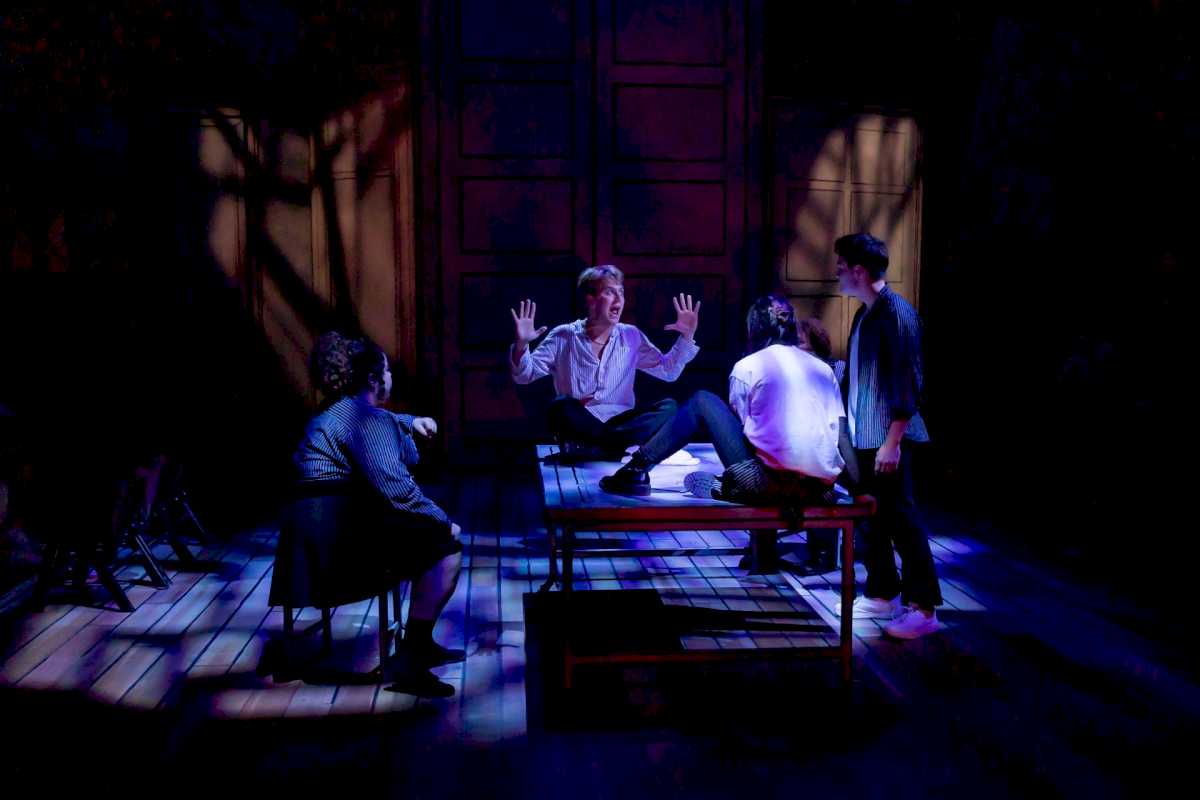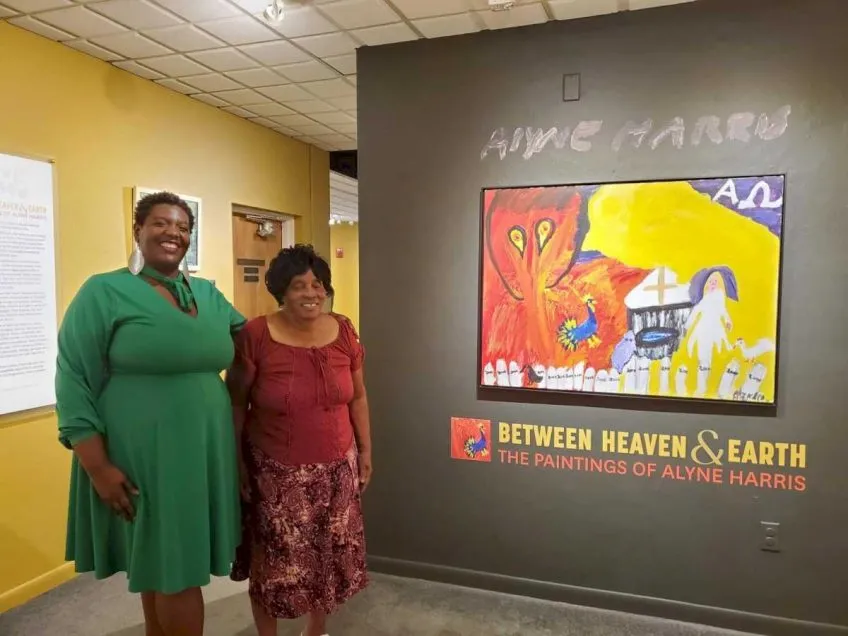Creative B Summer courses explore multitudes of meaning in ‘Sustainability’ theme

As the spring semester draws to a close and pollen clouds the air around the University of Florida, the bees are buzzing, the Tussock caterpillars are… fuzzing… and the College of the Arts is abuzz with preparations for the Creative B Summer Program.
With the support of the Office of the Provost, the College of the Arts showcases a wide range of creative work, opportunities and resources across campus during the Summer B term. Established in 2010, the program highlights creative catalysts through interdisciplinary activities and conversations to strengthen innovation at the University of Florida.
Now in its fifteenth year, Creative B brings together students and faculty from across UF, along with artists and scholars throughout the United States, and Alachua County community members to explore various themes emerging across the arts; the ways these themes intersect with challenges faced by contemporary society, and potential solutions to these challenges that are grounded in arts research, practice and cultural engagement.
Through an assortment of experiential courses, events, projects, workshops, festivals and presentations, Creative B cultivates a lively creative community of interdisciplinary trailblazers in the relative stillness of the UF main campus during the late summer months.
“When we put out the call for proposals,” says the college’s strategic events manager Stephanie Silberman, “we wanted a broad theme that could encompass a wide variety of projects and potential courses. It shouldn’t limit creativity but instead be a catalyst for different ideas. The current theme could be interpreted as cultural sustainability, environmental sustainability or social sustainability. This summer will have a great lineup of options for students and community members to engage directly with interdisciplinary research around sustainability.”
Picking up the thread initiated by the recent theme of Recovery Through the Arts, this year’s Creative B offerings explore how the arts can inform various discourses on sustainability, ranging from local community interconnectedness to well-being among health workers to the preservation of cultural memory.
In The Loop checked in with the faculty behind upcoming Creative Summer B courses to catch a glimpse of what students can look forward to this summer at the College of the Arts.
Stories for Sustainability: Harnessing Storytelling and Technology for a Sustainable Future
Assistant professor and assistant director of the School of Theatre and Dance (SOTD), Jashodhara Sen, Ph.D., has partnered with SOTD assistant professor, Manuel Simons, Ph.D., in designing a three-credit experiential course titled “Stories for Sustainability: Harnessing Storytelling and Technology for a Sustainable Future.”
Throughout the six-week class, students will explore the theme of sustainability in their own lives and communities through digital storytelling, culminating in a community event showcasing their work.
“Students are creating their own stories,” Sen says. “They are doing autoethnographic work, looking at academic resources and historical artifacts, and doing location studies.”
This new course offering encourages students to tell their own stories in connection to the world around them. How they tell their story—whether through video, podcast or another medium—will be the student’s choice. Sen and Simons will ensure that every student has the resources to craft their narratives as they see fit.
“We’ll look at what makes a compelling digital narrative,” Simons explains. “What are the ingredients for it? How do you compose a piece? The visual formal elements? How do you frame your shots? Where? How do you use foreground background? How do you use color, line, form, shape? What is the relationship to your unseen audience?”
Amelia Winger-Bearskin, associate professor of AI and the Arts and Banks Preeminence Chair in the Digital Worlds Institute, will serve as a consultant for the course. Among several notable accolades, Winger-Bearskin founded the AI Climate Justice Lab, IDEA New Rochelle and the award-winning podcast Wampum.Codes—projects that explore artificial intelligence and storytelling as tools for supporting community well-being.
Sen and Simons make it clear that the class is not limited to students who already have a background in digital storytelling.
“We’re giving students frameworks and tools so that they’re more skilled than when they came in,” says Simons, “but we’re also making it accessible in the sense of you can literally pick up your phone and do this.”
Both professors draw on their research and professional backgrounds in engaging with performance and storytelling as a critical tool for individual and community survival.
“There’s sustainability on the personal level in terms of survival,” Simons says. “And then there’s sustainability on the social and cultural level. What is the intersection between sustainability and your personal story? Does it intersect with cultural sustainability? Or does it intersect with environmental sustainability?”
Visionary Art in Florida: The Alyne Harris Memory Project
In another Creative B course, UF School of Art and Art History associate professor of museum studies and associate director of the Center for Arts, Migration and Entrepreneurship, Porchia Moore, Ph.D., presents an opportunity for students to conceptualize and enact sustainability within their community. Moore’s three-credit course is titled “Visionary Art in Florida: The Alyne Harris Memory Project.”

Centering cultural sustainability as the theme of her class, Moore invites students to become active participants in the archiving the work of Alyne Harris—who Moore considers one of the most important living folk artists of our time. Harris is a lifelong Gainesville resident.
“Everybody knows her locally as the woman who paints the chickens,” Moore explains. “But she’s also an artist whose peers include people like Lonnie Holley and Bill Traylor, and mostly men who are quite famous.”
While male artists like Holley and Traylor have received recognition for their contributions to self-taught and folk art, Moore noted that the same cannot be readily said for Harris — at least, not yet.
“She’s painted thousands of works in her lifetime,” says Moore. “And there’s no scholarship on her. None. Up until about four months ago, there wasn’t even a Wikipedia page.”
This omission of Harris from discourse in the arts raises alarms for Moore, much of whose scholarship centers on the loss of tangible and intangible heritage from cultural memory. Specifically, Moore’s work in the Gullah Geechee Cultural Heritage Corridor underscores the vulnerability of Black and African American heritage amid ongoing processes of gentrification.
“For me, cultural sustainability is about doing the work to make sure that we are actively engaged in naming, identifying and preserving these tangible and intangible culture heritage histories, narratives and products,” Moore says.
Students in Moore’s Creative Summer B course will have the opportunity to do just that.
From collecting oral histories to offering historic analysis, students will contribute to the contextualization of Harris’ body of work. Identifying cultural influences, major life events and other phenomena informing Harris’s work, the class will have a hands-on role in the archiving of a prolific figure in folk art history and in Gainesville’s history.
“Her works are autobiographical,” Moore explains. “She’s telling her story about being a woman who was born Black and impoverished in the Deep South. She’s got all these references that tell this greater story about being a self-taught artist in the Deep South.”
Similar to the “Stories for Sustainability Project,” Moore’s course focuses on the relationship between the individual and their community in conceptualizing sustainability.
“These courses highlight the multitudes of meaning behind sustainability and the practical research in relation to the arts happening right here at UF,” says Silberman.
“It amplifies the many ways in which students can directly engage with interdisciplinary projects on sustainability to make an impact in their own communities and perhaps ignite new ideas. Sustainability can then move beyond an abstract idea to something more tangible, understandable and—no pun intended—something sustainable for our collective future.”
This summer’s Creative B courses offer pathways for UF students in the arts (and any other discipline) to engage with sustainability in concrete ways impacting their community. Stay tuned for more In the Loop coverage of upcoming Creative B 2025 projects and activities.
To learn more, please visit: arts.ufl.edu/about/creative-b/overview/
Stay in the loop with our events page: arts.ufl.edu/in-the-loop/events/
Feature image caption: UF School of Theatre and Dance 2024 production, ‘Everybody,’ written by Branden Jacobs-Jenkins and directed by SOTD professor assistant professor, Manuel Simons. In this modern take on the medieval ‘Everyman’ morality play, each actor must memorize the entire script and be prepared to play any role, as they are assigned roles by chance at the beginning of each production. Photo by Michael Eaddy.
Featured Image Caption: UF School of Theatre and Dance 2024 production, ‘Everybody,’ written by Branden Jacobs-Jenkins and directed by SOTD professor assistant professor, Manuel Simons. In this modern take on the medieval ‘Everyman’ morality play, each actor must memorize the entire script and be prepared to play any role, as they are assigned roles by chance at the beginning of each production. Photo by Michael Eaddy.